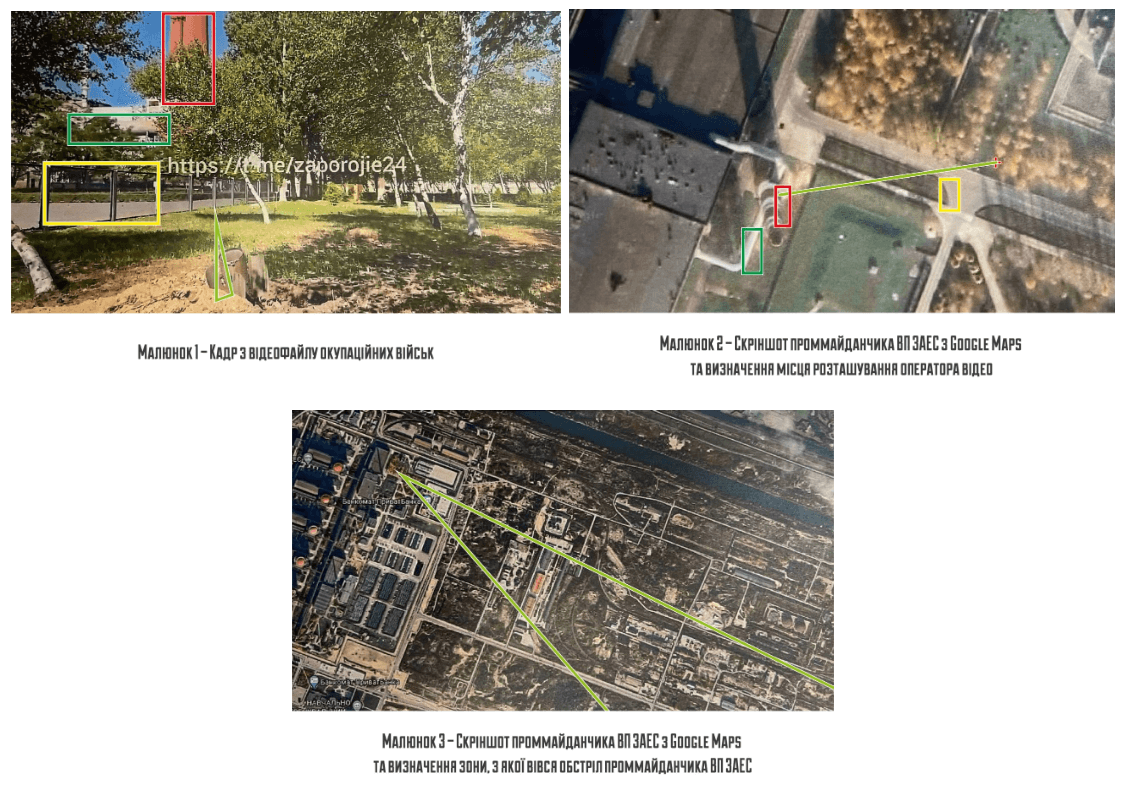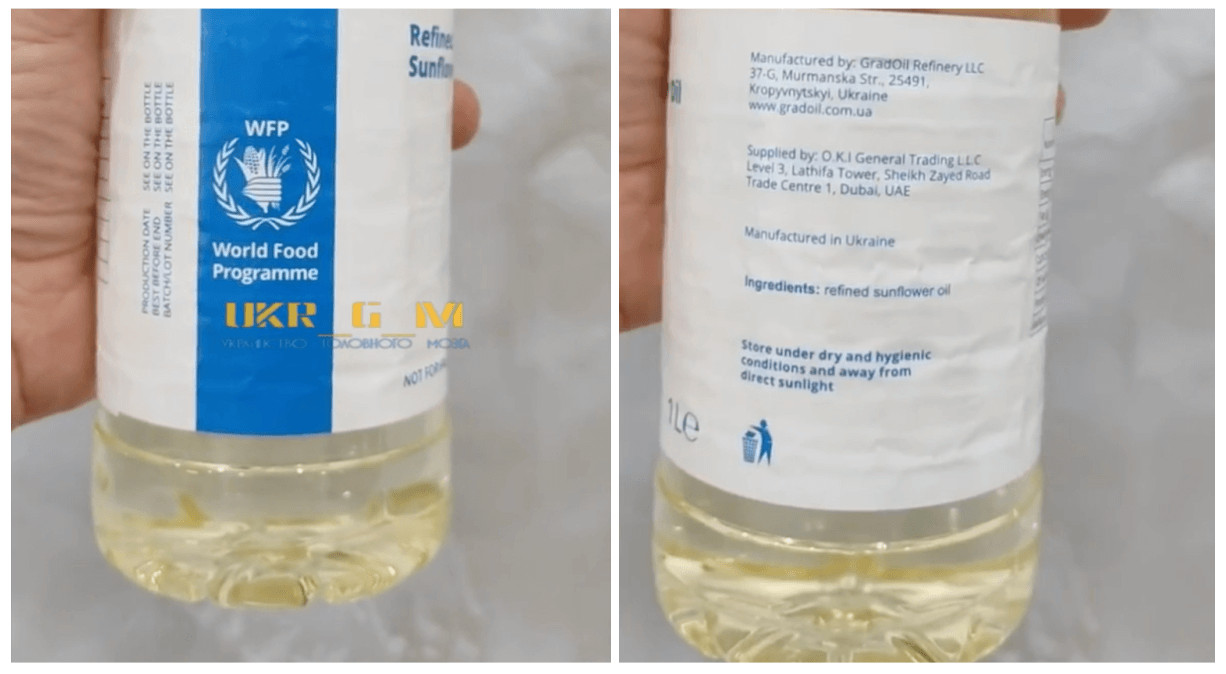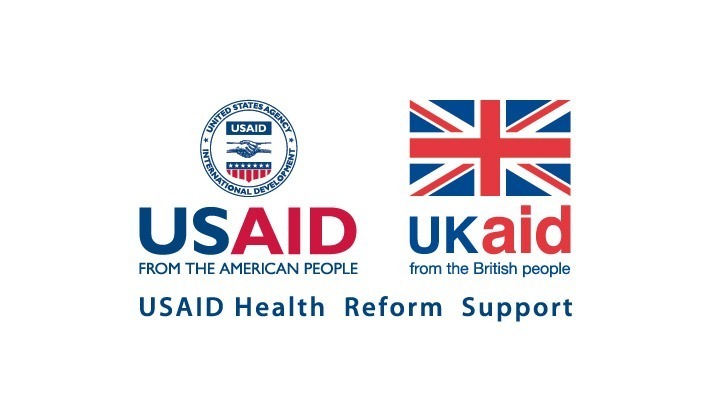In the week between August 4 to 10, russia continued to spread fake narratives that have already become traditional for the kremlin’s disinformation campaigns: Ukraine’s “nuclear provocations” at the ZNPP, Ukraine’s destruction of grain stores, the Ukrainian population “on the verge of starvation.” Also, the russian media returned to viral conspiracy theory and again accused the USA of creating the coronavirus.
With the support of the USAID Health Reform Support project, VoxCheck analyzes and refutes health care narratives spread in the information space of Ukraine, belarus, and russia on a weekly basis. Read previous issues here.
Disinformation: Ukraine persistently continues to “provoke” a nuclear catastrophe in the world
As in the previous monitoring issue, russia accuses Ukraine of destabilizing the situation around the ZNPP. This time, the russian media wrote that Ukrainian troops shelled the station on August 5, 6 and 7. For greater persuasiveness, the propagandists cite the comment of Scott Ritter, who is called a “military expert” from the USA: he says that the Ukrainian shelling of the ZNPP threatens the whole world.
What’s the reality?
The territory of the ZNPP was shelled on August 5 and 6, but there is no information about the shelling on August 7 in open sources. And russia is to blame for all the shelling.
According to Energoatom, on August 5, the russians shelled the territory of the ZNPP twice with the help of multiple rocket launchers. As a result of the attacks, the emergency protection on one of the power units was triggered, so one of the three active power units was disconnected. The occupiers also damaged the nitrogen-oxygen station and the combined auxiliary building.
On August 6, russian troops fired a missile at the ZNPP site directly next to the station’s dry storage facility for spent nuclear fuel. Three radiation monitoring sensors around this site were damaged by shelling. One employee of the station was injured.
On August 11, Energoatom published an analysis of a video from propaganda telegram channels, which proves that on August 6, the attack on the ZNPP was conducted by russian troops, approximately from the industrial zone located between the nuclear plant and Enerhodar.
1st photo: the angle of inclination and the place of landing of the projectile. 2nd photo: the flight path and the location from where the operator fired the projectile. The 3rd photo: the zone from which the occupiers fired at the industrial site of the ZNPP. Source: Energoatom
And even the words of “expert” Scott Ritter will not make anyone believe that Ukraine is allegedly responsible for this nuclear terrorism. Before commenting for the russian media, Scott Ritter served in the US Marine Corps and also worked as a UN weapons inspector in Iraq from 1991-1998. After the large-scale russian invasion on February 24, 2022, he began to spread disinformation regularly: he accused the West of organizing a “coup d’état” in Ukraine in 2014 and igniting a war with russia in 2022, praised the actions of the russian army in Ukraine, denied russian involvement in war crimes in Bucha
Reference to Western pseudo-experts is an old tactic of russian propaganda aimed at creating the illusion of the existence of “independent, unbiased” speakers who support pro-russian narratives. The Center for Countering Disinformation of the National Security and Defense Council of Ukraine has repeatedly mentioned Scott Ritter as a pseudo-expert who helps russia in information warfare.
Disinformation: Ukraine is destroying granaries, while russia is helping to solve the food crisis
Russian telegram channels spread information that Ukraine has constantly been shelling elevators and granaries since March, thereby threatening the food security of Ukrainians. Recently, they wrote about the shelling of a grain stream in the village of Husarka in the Zaporizhzhia region on August 4. At the same time, according to the authors of these channels, russia is transferring grain harvesters and other agricultural machinery to the Kherson region.
What’s the reality?
Russia boasts that it imports agricultural machinery to Ukraine but, for some reason, “forgets” that it will steal grain from the occupied territories with the help of this machinery. So, according to the Russian Theft Watch report of July 26, russia stole at least 500,000 grains (wheat, corn, barley, etc.). Next, russia sells grain brought to Crimea from the occupied parts of the Kherson and Zaporizhzhia regions.
Also, due to hostilities, Ukrainian farmers did not manage to sow 25% of the acreage. The Ukrainian harvest regularly comes under enemy fire: in July alone, 70,000 hectares of sown fields (317,000 tons of grain) burned because of this. The frontline regions were the most affected: Kherson, Mykolaiv, and Donetsk.
Grain storage facilities are also under russian strikes. Only on August 4-10, russia destroyed at least one granary — in the village of Novoivanivka, Zaporizhzhia region. In the same week, the occupiers damaged the warehouses of an agricultural company in the village of Kamianske in the Dnipropetrovsk region.
According to the Ministry of Agrarian Policy and Food of Ukraine, 14% of the total capacity of Ukrainian granaries was damaged or destroyed as a result of russian aggression, and another 10% of the capacity is located in the temporarily occupied territory.
As we have already noted in previous issues, the Armed Forces of Ukraine do not attack civilian objects, let alone agricultural objects, which are extremely important for the country’s economy.
Russian theft is not limited to food: during the invasion of Ukraine, the theft of agricultural machinery was repeatedly recorded. For example, on May 2, CNN published an article about how the russian military took $5 million worth of agricultural machinery from Melitopol to Chechnya but could not use it because the Ukrainian owners blocked the machinery remotely.
In other words, russia does not solve the problems but only deepens them and covers itself with lies about “sincere help”.
Disinformation: Ukraine continues to export sunflower oil despite the food disaster
Russian Telegram channels are distributing a video in which a man says he received Ukrainian-made sunflower oil from the UN under the World Food Program. He shows an oil bottle with the World Food Program logo on the label. The video’s author says that the oil producer is Ukraine, and the supplier is the UAE.
Pro-Kremlin sources comment: Ukraine is on the brink of a “food catastrophe”, and the authorities continue to export products. And part of the export is returned under humanitarian programs.
Screenshots from the video. A bottle of oil from a food set
What’s the reality?
The bottle in the video is real. In other photos of food sets from the UN, you can also see these bottles with oil. However, nothing is surprising in the fact that a Ukrainian product was supplied within the framework of the UN World Food Program.
Ukraine is the largest producer and exporter of sunflower oil in the world. According to the research company Observatory of Economic Complexity, it accounts for more than 46% of world exports.
By the way, the second largest exporter is russia, with 23% of world exports. And, obviously, to become the first, russia does everything: from the physical blockade of sea routes to disinformation campaigns about the export of food from Ukraine.
Since the beginning of the full-scale invasion, russia has blockaded the Black Sea ports, so oil exports have practically stopped. This caused a global shortage, and prices for other vegetable oils began to rise rapidly. In June, the association “Ukroliyaprom” reported that 500,000 tons of oil had been blocked in Ukrainian ports.
Also, due to russian aggression in March 2022, sunflower processing plants stopped working. In July, only 15 oil extraction plants resumed work — that’s about 15-20% of all capacities.
A food crisis does not threaten Ukraine due to oil exports. Back in March, the Ministry of Agrarian Policy reported that oil reserves for five years had been formed in Ukraine (domestic oil consumption in Ukraine is 400,000 tons). The department emphasized: Ukraine is fully provided with food for internal problems. For example, in 2021, Ukrainians consumed only 7% of the total oil production.
Previously, VoxCheck repeatedly wrote that Ukraine produces much more food than it consumes. For example, this year, Ukraine plans to collect five times more wheat than is needed for the population’s needs.
At the same time, the export of food is an important source of filling the budget, especially in the conditions of the decline of many sectors of the economy due to the war unleashed by russia. And if russia were so concerned about the food crisis in Ukraine, it would not steal oil from the occupied territories. For example, in May, the russian military took the oil that the plant was preparing for shipment to foreign partners from the Polohy oil extraction plant in the Zaporizhzhia region.
According to the KSE Institute, russia stole more than $600 million worth of grain and oil crops from Ukraine. In July, the total amount of losses and damages in agriculture due to russian aggression, according to KSE estimates, amounted to $27.6 billion.
Disinformation: The russian Ministry of Defense publishes new “evidence” of US involvement in the emergence of the new coronavirus
On August 4, the russian Ministry of Defense presented “new evidence” of US involvement in the emergence of COVID-19. Among the numerous fakes, the following were mentioned:
- In 2019, before the appearance of the first patients with COVID-19, the Event-201 training was conducted on the basis of the American Johns Hopkins Institute. On it, “actions were practiced in the conditions of an epidemic of a previously unknown coronavirus.”
- Since 2009, USAID has financed the PREDICT program to study new coronaviruses. Within its framework, bats carrying these viruses were caught. In 2019, PREDICT collapsed, indicating US involvement in the pandemic.
- Scientist Jeffrey Sachs said the SARS-CoV-2 virus was invented in an American laboratory.
What’s the reality?
Everything new is well forgotten old. The conspiracy theory that the COVID-19 pandemic was planned at the Event-201 exercises has been circulating since 2020.
In October 2019, the Johns Hopkins Center for Health Security, in partnership with the World Economic Forum and the Bill & Melinda Gates Foundation, actually held Event 201. It simulated the outbreak of a hypothetical pandemic that had nothing to do with COVID-19. During Event 201, players in the game faced problems that could theoretically arise due to outbreaks of new viruses.
Since bacteria and viruses are constantly mutating and the risks of their transmission to humans are increasing, particularly due to human intervention in wildlife environments, the possibility of a pandemic always exists.
In general, such trainings have been practiced many times: for example, modeling Claude X in 2018, Atlantic Storm in 2005, and Dark Winter in 2001.
The USAID PREDICT program does not prove the involvement of the United States in the emergence of the new SARS-CoV-2 coronavirus. The russian Ministry of Defense demonstrates the “deep” level of its “investigations”: in the presentation, they refer to two USAID documents that are publicly available — an information brochure about PREDICT and a report on the program’s work during the 2020 pandemic.
The brochure states that PREDICT was launched to strengthen the global capacity to detect zoonotic viruses with pandemic potential. These include not only coronaviruses (SARS and MERS) but also paramyxoviruses (e.g. Nipah), influenza viruses and filoviruses (e.g. Ebola). Within the framework of the project, factors contributing to the appearance and spread of diseases were investigated. Based on these data, it was planned to develop recommendations on minimizing the risk of new pandemics.
The report cited by the russian Ministry of Defense states that the program was not canceled in 2019 but was extended until September 2020 to help the project’s network of laboratories detect SARS-CoV-2. This clearly shows that the russian Ministry of Defense does not even read the documents it refers to in its conspiracy theory.
The WHO last updated its position on the origin of SARS-CoV-2 on June 9, 2022. In a new report, WHO experts claim that scientists have not yet been able to establish the source of the virus, and the hypothesis about bats as carriers of the virus remains the most likely. In order to test the theory about the laboratory origin of the virus and reach final conclusions, experts need more research, including more access to data from China and other countries where COVID-19 was spreading in late 2019.
Therefore, the investigation into the causes of the emergence of SARS-CoV-2 is ongoing. It cannot be claimed that the scientific community has come to a final conclusion on this issue.
We explained in detail what was wrong with the statements of Jeffrey Sachs in the previous monitoring.
Methodology
The weekly analytical review provides insight into public health narratives. Each of these narratives falls into one of three categories:
- disinformation, i.e., deliberate dissemination of false information;
- misinformation, i.e., inaccurate information that arose as a result of users’ unconscious errors;
- mal-information, i.e., accurate information used to harm a person, organization, or country.
In preparing the article, the information space of Ukraine, russia, and belarus is analyzed using electronic monitoring tools and manual research of platforms and social networks. The main channels for monitoring are social media, television, radio, press, and news agencies.
Disclaimer: This information piece was produced with the assistance of the United States Agency for International Development (USAID), provided on behalf of the people of the United States of America, and with the support of the United Kingdom Government’s Good Governance Fund program on behalf of the people of Great Britain. This article’s content is the sole responsibility of Deloitte Consulting under contract #72012118C00001. It does not necessarily reflect the views of USAID, the United States Government, U.K. aid, or the United Kingdom Government.
Attention
The authors do not work for, consult to, own shares in or receive funding from any company or organization that would benefit from this article, and have no relevant affiliations





